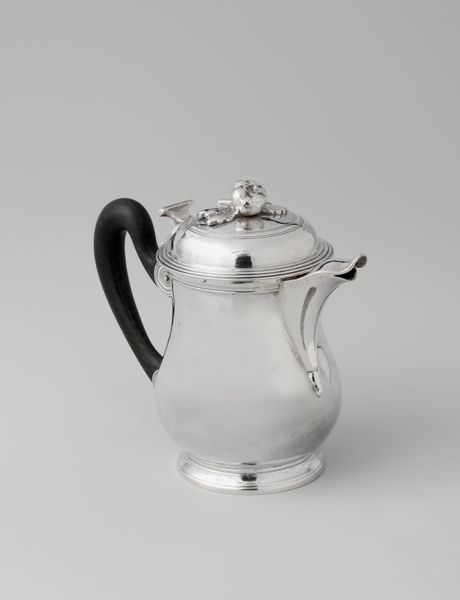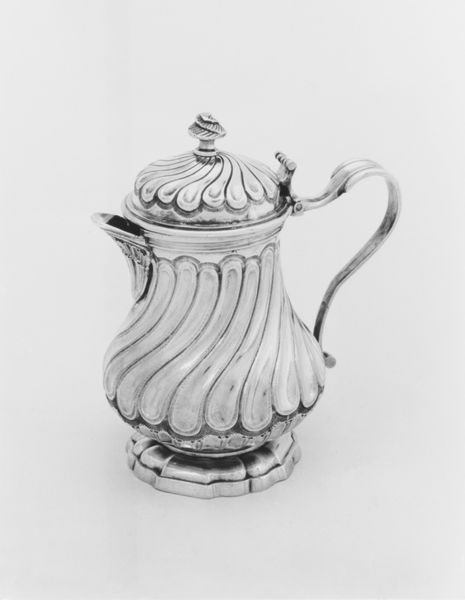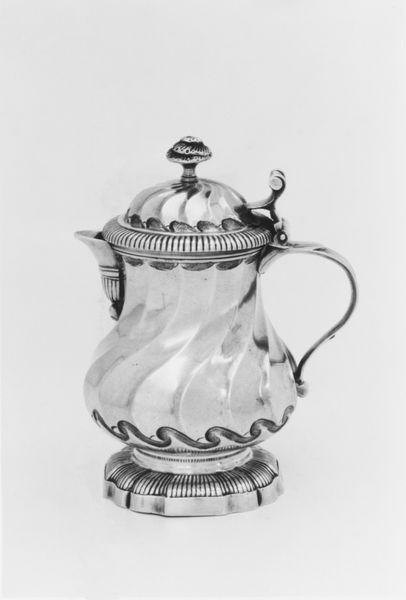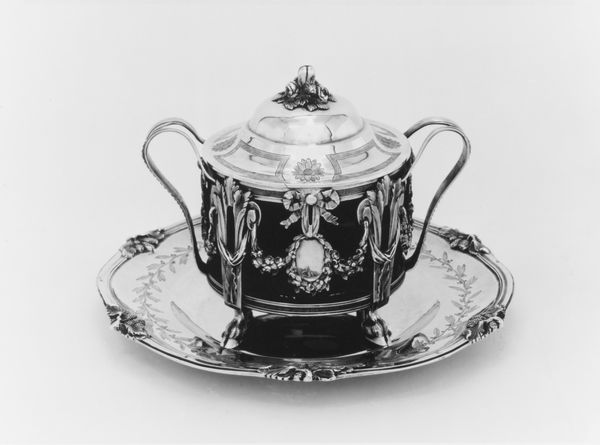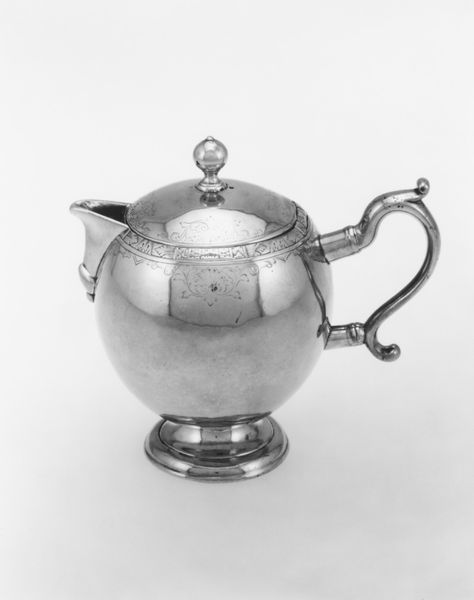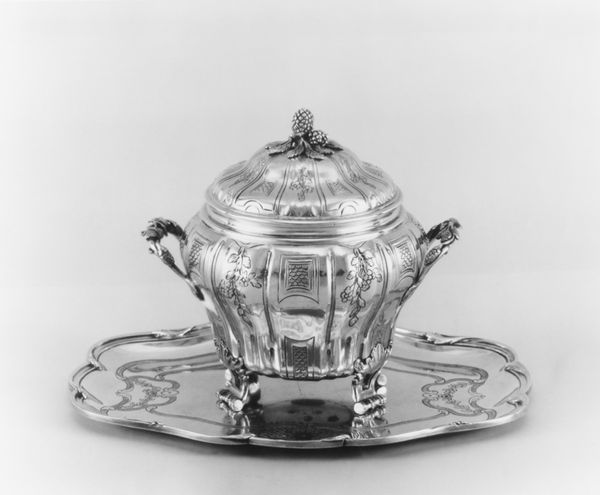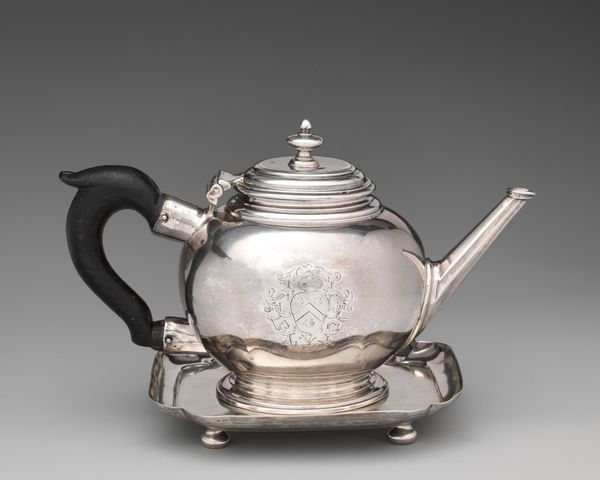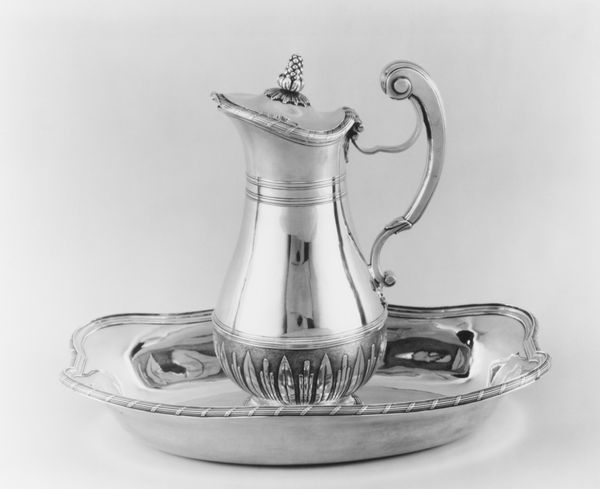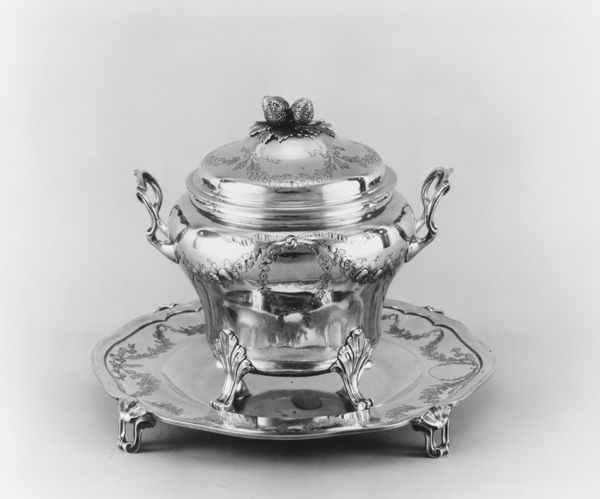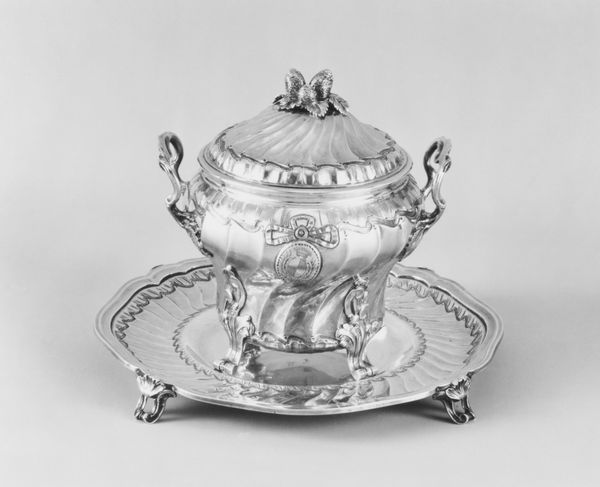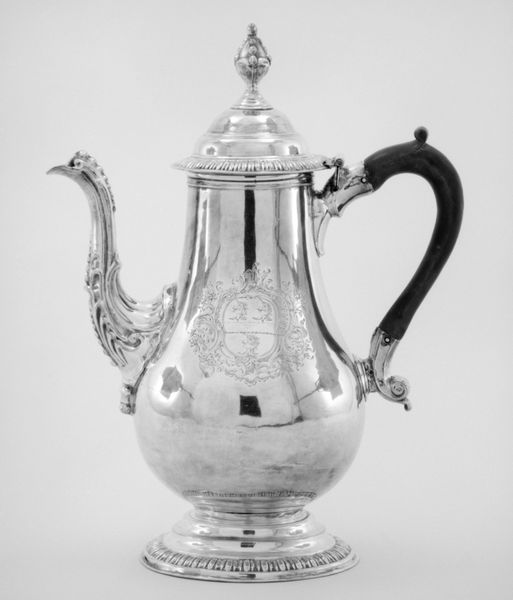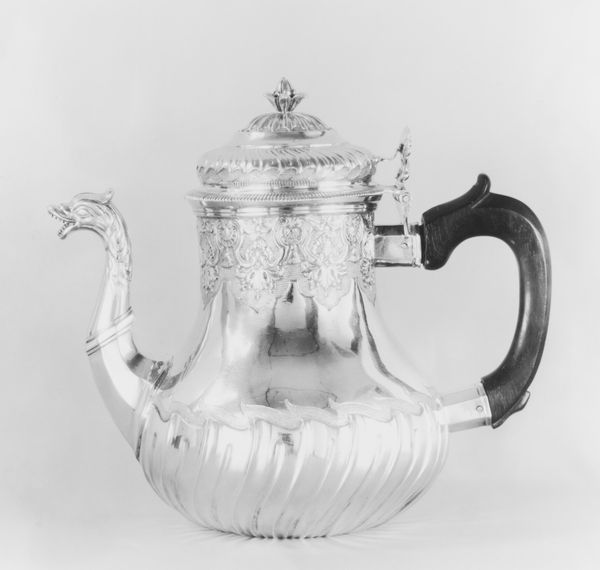
Dimensions: Height: 4 1/2 in. (11.4 cm)
Copyright: Public Domain
Editor: This is a silver mustard pot from the mid-18th century by Alexis Micalef, housed here at the Met. The spiraling form makes it look like it’s in motion. I'm curious, what historical perspectives does this object open up? Curator: Well, think about the period – late Baroque, heading towards Rococo. It’s all about aristocracy displaying wealth and refinement. This isn’t just a mustard pot; it’s a statement of social status, reflecting an era defined by elaborate court life. The silver itself would have been incredibly expensive. Who do you imagine would own such an object? Editor: Someone with a lot of money, definitely! Maybe someone in the French court? This does scream luxury, but does function even come into play at all? Curator: The function is secondary. Yes, it holds mustard, but primarily, it's about impressing guests. These types of intricate forms would have been commissioned for display during meals, turning even a condiment into an emblem of power. The elaborate decoration is also pushing back on some societal norms around strict social hierarchies, perhaps a silent challenge to established conventions. Does that alter how you perceive it now? Editor: Definitely. Seeing it as a subtle form of social commentary adds another layer. It's not just pretty, it's saying something. Curator: Exactly. These objects aren't passive. They actively participate in shaping and reflecting societal values. What does it tell us about our own values then, keeping it displayed in the museum? Editor: Perhaps we’re both celebrating craftsmanship and critiquing excess, depending on your viewpoint. I appreciate how a seemingly simple object can tell such a complex story.
Comments
No comments
Be the first to comment and join the conversation on the ultimate creative platform.
